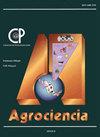VEGETATIVE PROPAGATION OF THREE TREE SPECIES WITH CULTURAL AND ECOLOGICAL IMPORTANCE FROM THE TROPICAL DRY FOREST
IF 0.5
4区 农林科学
Q4 AGRICULTURE, MULTIDISCIPLINARY
引用次数: 1
Abstract
The tropical dry forest is a diverse ecosystem, but it is poorly protected. In Mesoamerica, this forest is among the most threatened by anthropogenic activities, which makes necessary agricultural practices that incorporate local germplasm preservation. We propose the propagation with stakes of Bursera copallifera, B. fagaroides, and Ipomoea pauciflora, three tree species of the tropical dry forest of Morelos, Mexico. We evaluated if stake survival was related to their diameter, height, and leave's presence for each tree species in a one-year greenhouse experiment. After one year, 79%, 39%, and 9% of the stakes of B. fagaroides, B. copallifera, and I. pauciflora became established, respectively. Only the leaf's presence influences stake survival. The propagation of stakes is a highly viable method for the two Bursera species. With stakes, peasants can develop live fences inside agricultural fields, preserve local germplasm, and simultaneously, the ecological interactions and the ecosystem functions of the species in the landscape. Our work contributes original and transferable knowledge for the vegetative propagation of tree species of the tropical dry forest. This knowledge can help with the conservation of the tropical dry forest and the sustainable management of tree species with ecological and cultural importance.热带干旱林中三种具有文化和生态意义树种的营养繁殖
热带干林是一个多样化的生态系统,但保护不力。在中美洲,这片森林是受人类活动威胁最严重的森林之一,因此有必要采取包括当地种质保护在内的农业措施。本文对墨西哥莫雷洛斯热带干旱林的三种乔木Bursera copallifera、B. fagaroides和Ipomoea pauciflora进行了木桩繁殖研究。在为期一年的温室实验中,我们评估了每个树种的木桩存活率是否与它们的直径、高度和树叶的存在有关。1年后,fagaroides、copallifera和pauciflora的树桩成活率分别为79%、39%和9%。只有叶子的存在影响木桩的存活。对于这两种Bursera来说,桩繁殖是一种非常可行的方法。通过木桩,农民可以在农田内设置活栅栏,保护当地的种质资源,同时保护景观中物种的生态相互作用和生态系统功能。我们的工作为热带干旱森林树种的无性繁殖提供了原始的和可转移的知识。这些知识有助于保护热带干燥森林和可持续管理具有生态和文化重要性的树种。
本文章由计算机程序翻译,如有差异,请以英文原文为准。
求助全文
约1分钟内获得全文
求助全文
来源期刊

Agrociencia
农林科学-农业综合
CiteScore
0.50
自引率
33.30%
发文量
51
审稿时长
18-36 weeks
期刊介绍:
AGROCIENCIA is a scientific journal created and sponsored by the Colegio de Postgraduados. Its main objective is the publication and diffusion of agricultural, animal and forestry sciences research results from mexican and foreign scientists. All contributions are peer reviewed. Starting in the year 2000, AGROCIENCIA became a bimonthly and fully bilingual journal (Spanish and English versions in the same issue). Since 2007 appears every month and a half (eight issues per year). In addition to the printed issues, the full content is available in electronic format.
 求助内容:
求助内容: 应助结果提醒方式:
应助结果提醒方式:


